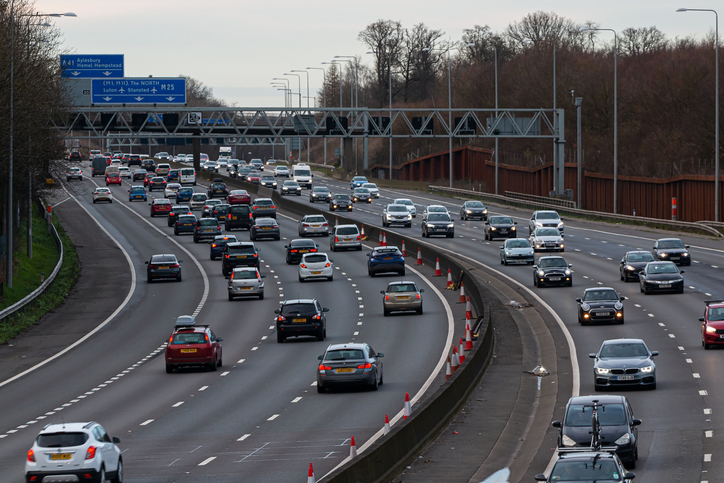
Approximately half of smart motorway drivers admit to avoiding lane one, despite this defeating the whole point of the converted hard shoulder, according to a new study.
In a survey conducted by the RAC, over 1,900 motorists were questioned about their driving habits on all-lane running (ALR) smart motorways. 21% of respondents said they frequently avoided using lane one, while 28% admitted to only using the inside lane occasionally.
The survey revealed that most drivers (68%) thought other motorists don’t use the inside lane, despite it being free. An additional 20% claimed to witness this sometimes, and 5% only occasionally.
When asked about why they do this, over three-quarters (77%) reported fears of encountering a stationary vehicle when there is no hard shoulder. A further 40% of motorists worry about being crashed into if they had to pull over.
52% of ALR users claim they avoid lane one because of the belief that it is mostly for the use of HGVs, meaning they would have to frequently overtake these vehicles. An additional 38% of pollees reported that they steer clear of the inside lane because the traffic there is often much slower than 70mph.
When questioned about what would make them feel safer on smart motorways, three-quarters of drivers (74%) said they would like to see an increase in refuge zones. A similar number (72%) would be reassured by technology that detects stationary vehicles.
RAC road safety spokesperson Simon Williams commented on the findings: “Ever since the first all lane running smart motorway opened on the M25 in April 2014 there has been a considerable amount of controversy about safety, which worsened significantly following several high-profile fatal collisions.
“Consequently, these roads continue to be deeply unpopular with drivers who, before their introduction, had been used to having the relative refuge of a hard shoulder available in an emergency.
“On top of this our latest research worryingly shows that half of drivers actively avoid using the inside-most lane for a variety of reasons, not least the fear of being crashed into, meaning much of the extra carriageway capacity they were meant to bring is wasted.”
Read another of our blog posts to stay up to date with the latest road safety news. Alternatively, click here for a free road marking quote.
